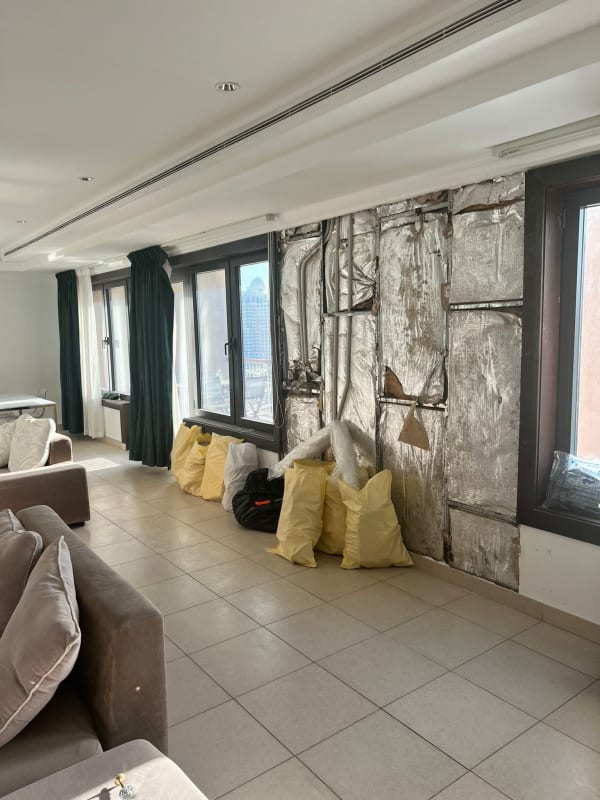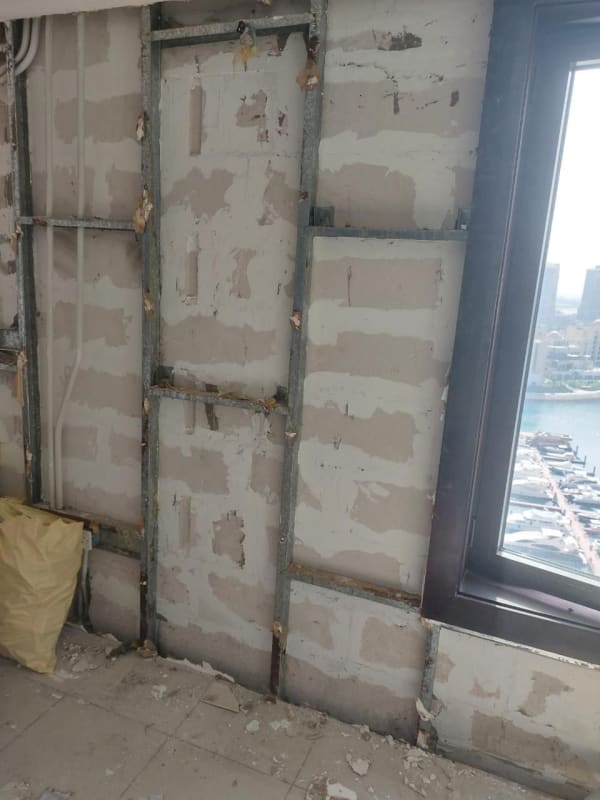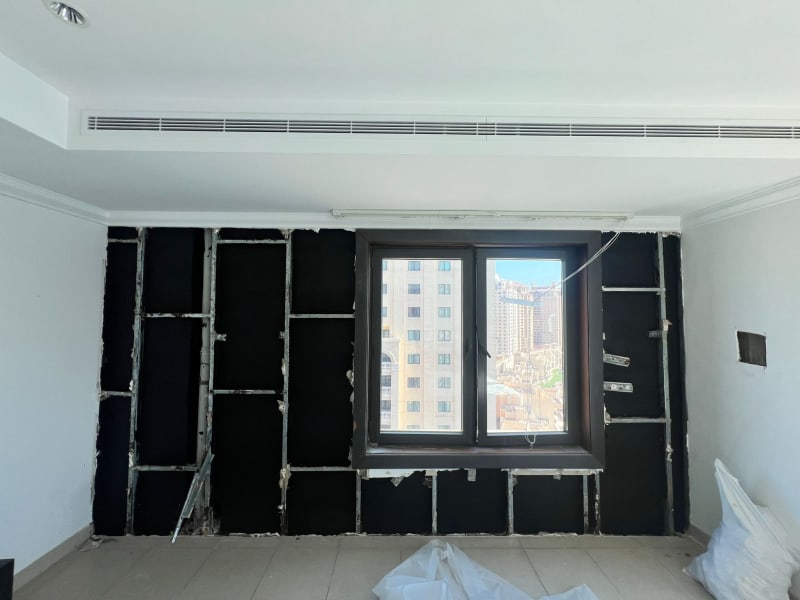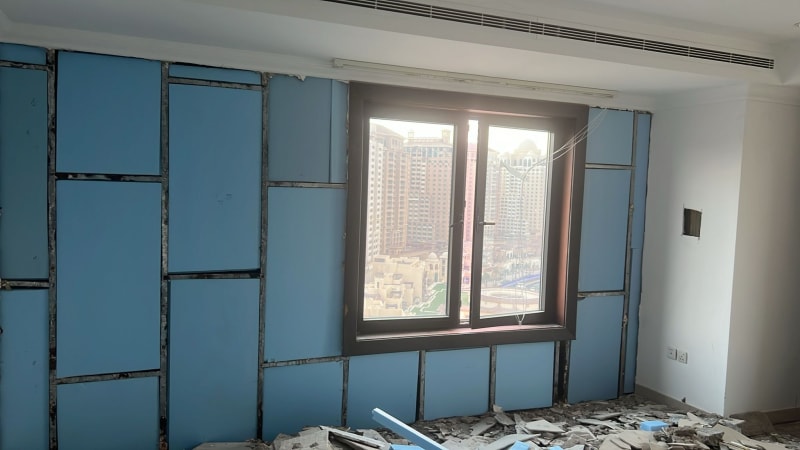alexcc2000
Computer
We are renovating a flat in the Middle East (so very hot temperature during summer 50'C), and noticed that the exterior wall was not sealed properly. This was causing hot air to and humidity to come through the walls and created mould. The builders filled the gaps and placed an insulation waterproof film.
The question is about the material to use for insulation between the exterior wall and inside plasterboard
Option a) Blue Foam (Extruded Polystyrene): Very low water absorption. Great sealant. But its flammable
Option b) Rockwool: A bit less effective insulation than Blue foam but flame retardant
ORIGINAL INSULATION WITH ROCKWOOL

After plastering and filling the gaps

After water sealant

With Blueboard

The question is about the material to use for insulation between the exterior wall and inside plasterboard
Option a) Blue Foam (Extruded Polystyrene): Very low water absorption. Great sealant. But its flammable
Option b) Rockwool: A bit less effective insulation than Blue foam but flame retardant
ORIGINAL INSULATION WITH ROCKWOOL

After plastering and filling the gaps

After water sealant

With Blueboard

